Microsoft Surface Pro 2 Review
by Anand Lal Shimpi on October 21, 2013 12:01 AM EST- Posted in
- Tablets
- Microsoft
- Mobile
- Surface
- Surface Pro 2

When Microsoft introduced its first Surface devices last year, it did so in a staggered fashion. Surface RT showed up first, then four months later Surface Pro went on sale. Despite sharing a lot of the same DNA, the response to Surface Pro was much better than what we saw with Surface RT. While Surface RT suffered a lot from being a new platform that lacked the support of decades of Windows applications, Surface Pro had no such issue.
Instead, Surface Pro offered the promise of a tablet that could potentially replace your notebook and desktop as well. Microsoft’s strategy with Surface Pro mimicked the market transition we saw years earlier. The notebooks that replaced desktops over the 2000s did so by being able to work as both notebooks or desktops. Similarly, Microsoft hoped that Surface Pro could act as both a tablet and a notebook for those users who didn’t want to carry two devices.
By and large, Microsoft was successful in achieving that vision. Although as with all devices that attempt to fulfill multiple roles, Surface Pro presented a set of tradeoffs. It wasn’t as portable and didn’t last as long on a single charge as a conventional ARM based tablet. It also didn’t have the same keyboard or in-lap experience as a PC notebook. You got a compromised experience on both sides of the fence. Just as with Surface 2, Microsoft is committed to a more aggressive update cadence to its Surface Pro hardware as well. Here we are, almost 9 months since availability of the original Surface Pro, reviewing its successor.
Unlike Surface 2, Surface Pro 2 shows almost no signs of change on the outside. It reminds me of the pre-iPhone/iPad era where expecting a dramatic chassis redesign a year after introduction was considered ludicrous. Surface Pro 2 keeps the exact same finish, dimensions and weight as the original Surface Pro.
It’s unfortunate given how much thinner and lighter the device could be this time around. I suspect Microsoft has a three year plan for Surface Pro. It could move to a thinner design this year and drop performance by going to a 6W Haswell SKU, keep performance the same but pay a thermal penalty with a 15W Haswell or wait until Broadwell next year to shrink the chassis (hopefully without much of an associated performance reduction). I can understand why Microsoft chose the latter, it’s still just frustrating as I would’ve loved a thinner/lighter Surface Pro.
I also lament Microsoft’s decision to update the VaporMg finish on Surface 2 but not on Surface Pro 2. I really like the new finish both in feel and in color. Surface 2’s resistance to picking up fingerprints is an added bonus on that front. Alas, it’s an update that I’m guessing the Surface Pro lineup won’t get until next year.
Surface Pro 2 also retains the same front and rear facing cameras as its predecessor, both 1.2MP units and it doesn’t get the new 3.5/5MP sensors from Surface 2.
You still get a bundled Wacom active digitizer with Surface Pro 2, just like with the original. I’m hardly a creative professional, but from what I’ve experienced with the pen it’s really a great addition for those folks who are. I’ll point you at none other than Gabe from Penny Arcade who did a great post on an artist’s perspective of using the Surface Pro’s stylus. Spoiler alert: he likes it a lot. If I illustrated for a living, I probably would too.
Surface Pro 2 inherits the same kickstand and branding decisions as Surface 2. As I mentioned in my Surface 2 review, the new 2-stage kickstand is awesome and a huge improvement over its predecessor. The kickstand now opens at 24 and 40-degree angles, the latter enables more comfortable use when you’re not typing at a desk. The new kickstand also ditches the Windows 8 logo in favor of the Surface logo across the back.
Finally, Surface Pro 2 does get the new 1080p panel from Surface 2 (albeit a brighter implementation). There’s no improvement in resolution compared to the original Surface Pro, but color accuracy is a lot better.
I did notice an odd display corruption issue on Surface Pro 2 when waking up from sleep (pictured above). Resetting the device or sometimes just doing another sleep/wake cycle was enough to fix it. Microsoft tells me it’s aware of the problem and plans to issue an update shortly to address it. We only got review samples a few days prior to the NDA lift, I get the impression that it was a lot of work to get final hardware out the door in time for this launch. Update: Microsoft traced the issue back to a later revision of an Intel graphics driver. After release, a Surface Pro 2 update rolled back to an earlier optimized driver that no longer exhibits the display corruption on wake issue.
Internally we see where Microsoft spent most of its time updating Surface Pro. It all starts with an upgrade to Haswell. Surface Pro 2 features Intel’s Core i5-4200U, a dual-core 1.6GHz 15W Haswell part with Hyper Threading, 3MB of shared L3 cache, and a max turbo frequency of 2.6GHz. Just like last time, I had no issues hitting 2.6GHz on Surface Pro 2. I would see 2.3GHz far more frequently however.
As Surface Pro 2 is rather thick by Ultrabook standards, you get the full performance of the 4200U. I ran a multithreaded Cinebench 11.5 test on Surface Pro 2, comparing it to Apple’s 13-inch 2013 MacBook Air under Windows 8. The two deliver identical performance, just in different form factors:
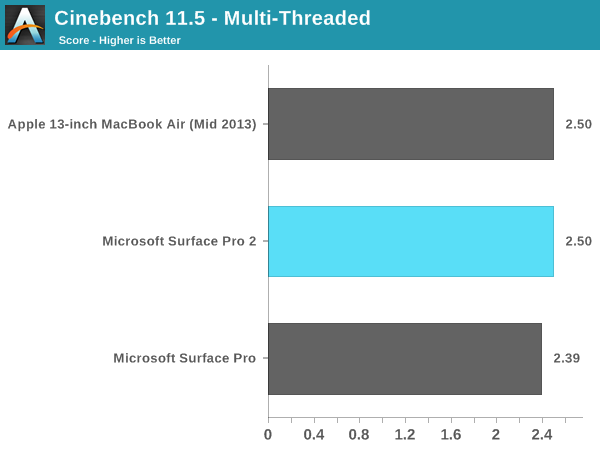
The 4200U is nearly identical to the base CPU you get in the new 2013 MacBook Airs, the only difference being that you get Intel’s HD 4400 graphics vs. HD 5000. Apple’s obsession with graphics performance explains the difference, although it’s disappointing to see Microsoft not sharing the same obsession. To Microsoft’s credit the difference between Intel’s HD 5000 and HD 4400, when constrained by a 15W TDP, just isn’t very large. The real benefit to going with HD 5000 over HD 4400 has to do with power consumption, since you can get similar performance at lower frequencies/voltages thanks to a doubling of the number of EUs in HD 5000.
It’s not just the CPU that’s changed this time around, Microsoft did extensive work under the hood of Surface Pro 2 to further reduce power consumption. Haswell ULT supports LPDDR3, a feature that Microsoft chose to take advantage of in pursuit of lowering power consumption. All other components on the motherboard are also optimized for power consumption. The result is a device that looks like and is cooled similarly to its predecessor, but is appreciably cooler/quieter in operation. While the original Surface Pro would spin its fans up on a regular basis, Surface Pro 2 is far more hesitant to do the same thing. In what I’d consider to be light to medium tablet use, Surface Pro 2 behaves like a passively cooled device. When the fans do ramp up, they aren’t any louder than before as far as I can tell.

USB3 transfers to an internal mSATA SSD
Just like the original, Surface Pro 2 retains a full SSD rather than an eMMC solution. We’re still dealing with an mSATA based drive here, but Microsoft expanded the available capacity options. The combination of DRAM/SSD/price options are in the table below:
| Microsoft Surface Pro 2 Storage Configurations | ||||||||||
| SSD | 64GB | 128GB | 256GB | 512GB | ||||||
| LPDDR3 Configuration | 4GB | 4GB | 8GB | 8GB | ||||||
| Price | $899 | $999 | $1299 | $1799 | ||||||
The most interesting options are unfortunately the more expensive models. I think the sweet spot is likely the 8GB/256GB version, which also happens to be how my review sample was configured. Unfortunately the LPDDR3 is soldered on board (as with all modern Ultrabooks) so that’s not user upgradeable. The SSD is technically serviceable, but there’s a ton of risk associated with doing so as you have to take apart your Surface Pro 2 to do so. Once again Microsoft refuses to equip Surface Pro with a Thunderbolt port, which would help greatly in dealing with high performance storage expansion concerns. There is still a USB 3.0 port at least.
Surface Pro 2 is compatible with all of the new dock accessories, including the new touch and type covers. I went through the improvements to both of those in our Surface 2 review already, but in short they are great. I still prefer the new type cover as I can type a lot faster on it, but the new touch cover is significantly better than its predecessor. Neither is included in the cost of a Surface Pro 2, so factor in another $119 - $129 depending on which cover you end up with. I noticed the same trackpad disappearing issues on Surface Pro 2 as I did on Surface 2, Microsoft claims a fix is in the works.
| Microsoft Surface Pro Comparison | ||||||||
| Surface Pro 2 | Surface Pro | |||||||
| Dimensions | 10.81 x 6.81 x 0.53" | 10.81 x 6.81 x 0.53" | ||||||
| Display | 10.6-inch 1920 x 1080 w/ Improved Color Accuracy | 10.6-inch 1920 x 1080 PLS | ||||||
| Weight | 2.0 lbs | 2.0 lbs | ||||||
| Processor | Core i5-4200U with HD4400 Graphics (15W Haswell ULT) |
Core i5-3317U with HD4000 Graphics (17W Ivy Bridge) |
||||||
| Cameras | 1.2MP/1.2MP (front/rear) | 1.2MP/1.2MP (front/rear) | ||||||
| Connectivity | WiFi | WiFi | ||||||
| Memory | 4GB or 8GB LPDDR3 | 4GB | ||||||
| Storage |
64 or 128GB (4GB RAM) 256GB or 512GB (8GB RAM) |
64GB or 128GB | ||||||
| Battery | 42.0 Wh | 42.0 Wh | ||||||
| Starting Price | $899 | $799 | ||||||
Surface Pro 2 ships with Windows 8.1 Pro x64. Since there's no connected standby 64-bit version of Windows 8/8.1 yet, Surface Pro 2 ships without the feature. It also continues to behave more notebook like in the sleep/wake sense as a result. There's a delay between when you press the power/lock button and when you'll see the tablet respond as the system comes out of its sleep state. Ironically Surface Pro 2 comes with nothing more than a link to try Office 2013, while Surface 2 comes with a free copy of the Home & Student edition.


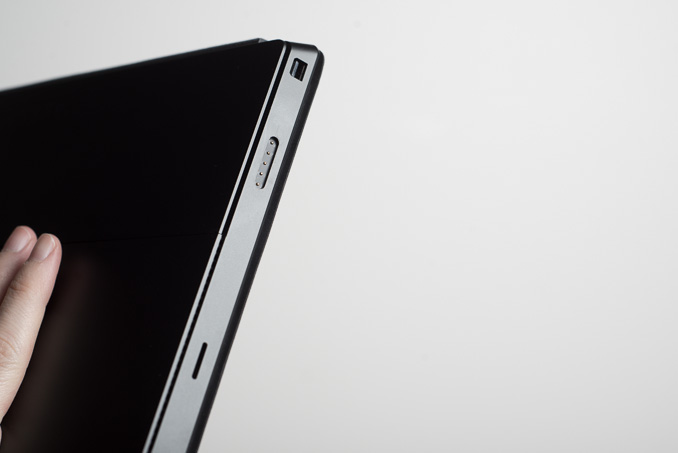
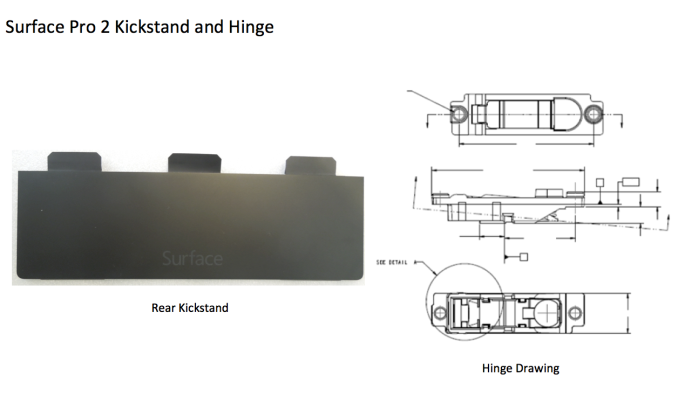
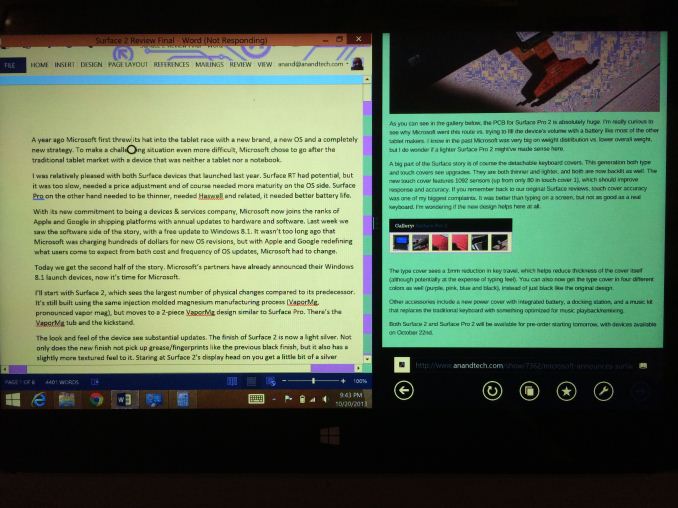


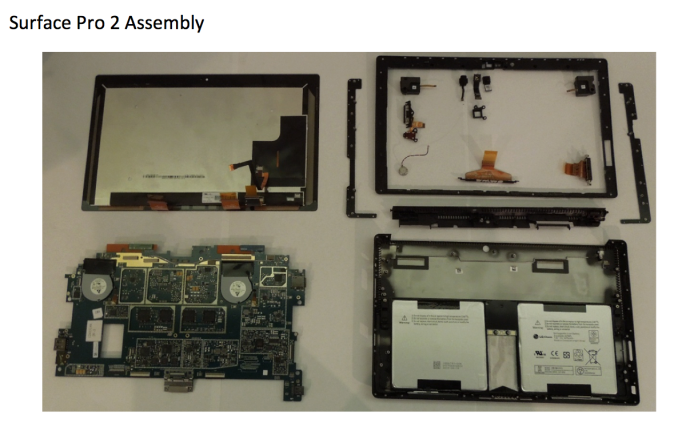
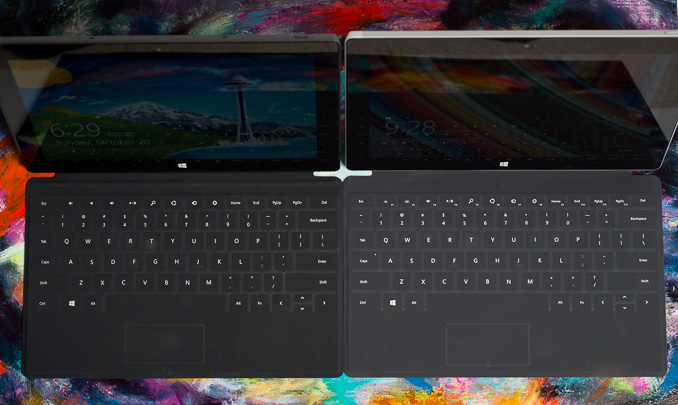








277 Comments
View All Comments
ananduser - Wednesday, October 23, 2013 - link
Anand usually calibrates for 200nits. But it seems to me that Anand rushed the testing, I mean the Pro is definitely worthy of PC testing. This review only focuses on tablet testing.jje - Wednesday, October 23, 2013 - link
I am writing this on my Galaxy Note II because the S pen stylus is so much easier to use than a tiny onscreen keyboard. l am thinking of getting a bigger tablet, such as the Note 10.1, but l use OneNote a lot and the Android version isn't great and of course there's no integration with Outlook (which doesn't exist on Android). I would love to come out of a meeting, click on a note l've just made with my stylus and drop it onto the tasks list in Outlook to update my to-do list. So the digitizer in the surface is, for me, a really attractive feature. I don't want or need another laptop, I want a bigger version of my phone that runs Office and uses a stylus. The Surface Pro is overkill (too expensive and a bit heavy) but the surface 2 doesn't have a digitizer. So, I am waiting for Dell's Venue Pro 11 and to test drive a Note 10.1. l wish Microsoft and others would think about making a perfect tablet instead of a half-arsed laptop.Imaginer - Wednesday, October 23, 2013 - link
The thing is, if going by sheer physical size, there is no one size fit completely all. It is asking for one shoe size for everyone, big and small.Microsoft left other sizes for now open to other hardware partners. The Dell Venue Pros go at 8 inches as well as 11 like you mentioned. Sony has an 11 inch offering. Acer offers a 7 inch tablet.
And Wacom themselves offer a 13 inch Companion tablet.
jje - Wednesday, October 23, 2013 - link
Sure, but it's not just the screen: the surface Pro is heavy and expensive, arguably because it's overpowered. Microsoft have been in pen computing a very long time and its handwriting recognition is superb: l just wish they would put it in the right hardware.Serr - Wednesday, October 23, 2013 - link
"I did notice an odd display corruption issue on Surface Pro 2 when waking up from sleep (pictured above). Resetting the device or sometimes just doing another sleep/wake cycle was enough to fix it. Microsoft tells me it’s aware of the problem and plans to issue an update shortly to address it.""I noticed the same trackpad disappearing issues on Surface Pro 2 as I did on Surface 2, Microsoft claims a fix is in the works."
"Like Surface 2, Surface Pro 2 ships with 150% DPI scaling enabled for classic desktop applications. Unfortunately even under Windows 8.1 there are a lot of issues with DPI scaling in 3rd party applications and touch targets. Chrome for example is mostly unusable as a touch browser in classic mode."
"While multitasking on Surface 2 can struggle, the same really can’t be said for Surface Pro 2."
"Just like last year, my recommendation comes with a caution – Surface Pro 2 is good, I’m happier using it than I was with last year’s model, but the Broadwell version will be even better."
Looks like a "don't buy" advice for both tablets to me.
althaz - Thursday, October 24, 2013 - link
Multitasking may struggle on the Surface 2 (in my experience it depends what you are doing), but you can't do it all on other tablets :).althaz - Thursday, October 24, 2013 - link
Also, the 150% scaling issues do exist, but I can't recall encountering them. This might be because there's not many desktop apps that I use (basically Office, remote desktop, games and Putty).If you want to use Chrome (I do use Chrome on my desktop, but prefer IE11 on my Surface Pro because it's faster and supports touch) or another 3rd party browser this might be where the issue starts to crop up.
The other things are minor bugs (no different to similar things on every laptop/phone/tablet released) and will be fixed promptly.
Not that I'm saying you nessecarily should buy, but for what it is there is no better device ever made.
What it isn't though is a lightweight tablet or a portable typing machine. As somebody who uses it for portable gaming (emulators, Starcraft and Football Manager mostly), in-transit media and information consumption and a portable desktop PC though, I can say I do not miss my laptop (in fact I am not 100% sure where I even left it).
Utomo - Friday, October 25, 2013 - link
Suggestion: 1 Microsoft need to improve the windows 8, so the battery life is much better. including on standby 2 need a thinner body 3 Price is too expensive.Devjones2236 - Sunday, October 27, 2013 - link
First, the stylus is the best in its class. It has very good accuracy and feels like you are writing with a pen not a piece of crap rubberized marker like the ipad. This requires a capacitive screen, which is much more expensive than a non-capacitive screen (ipad or any other apple product, as well as Lenovo Yoga 2 Pro and most other windows machines) it has premium specs with a high def screen. I hate when people compare this to MacBook Air. The air is not touch screen at all and does not have a HD screen. The 128 gb ipad is $800 without a keyboard and it cannot run legacy applications, does not have a capacitive screen allowing for digitized stylus (just the crappy bamboo sticks), does not come with a pen, and does not have the performance the Surface Pro 2 has. iPads are good for what they are but the surface pro 2 deserves a premium price. In addition, it is perfect for taking written notes on in meetings where clicking keyboards are not allowed or in class, it is productive on the go, and at home I hook it up to a 32 inch LED TV which allows me to be very productive. The weight is not that big of an issue unless you want to read a book sitting in a chair. I read PDFs on it all the time. However, if reading is the only reason you want a tablet I would stay with a 7-8inch light tabletProppw - Sunday, October 27, 2013 - link
"This requires a capacitive screen, which is much more expensive than a non-capacitive screen (ipad or any other apple product,"You just made a fool of yourself! Apple uses capacitive screens since iPhone 1 for touch enabled screen products (iPhone, iPad, iPod Touch).
This shows how ignorant MS shills are!